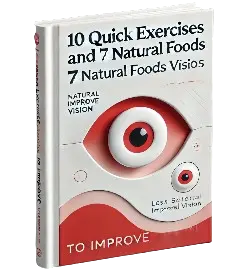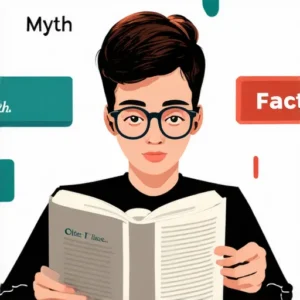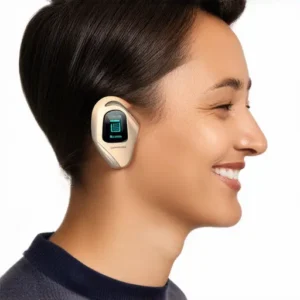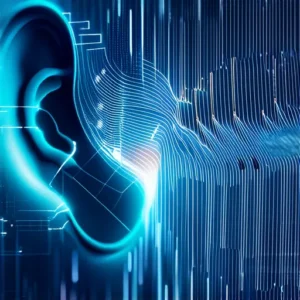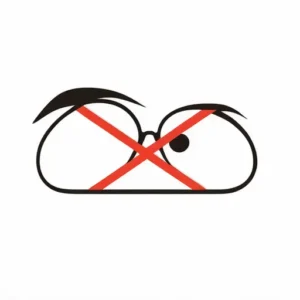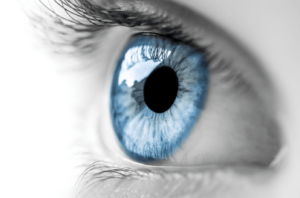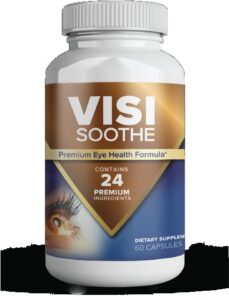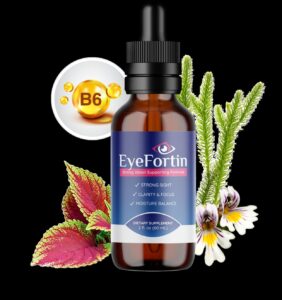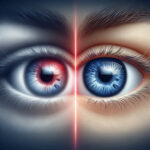Ways to Cure Eyesight: Myths vs. Facts
Introduction: The Truth About Improving Your Eyesight
Let’s face it—in our screen-filled world, more of us are wondering how to fix our vision than ever before. Whether it’s from binge-watching shows, genetics, or just getting older, blurry vision is becoming everyone’s unwelcome companion. But with so much advice floating around (some helpful, some downright dangerous), how do you know what actually works?
Some swear by carrot juice and eye yoga, while others rush to book LASIK consultations. The reality? There’s no magic bullet, but there are science-backed ways to protect and improve your vision. Let’s cut through the noise and explore what really helps—and what’s just wishful thinking.
What Actually Works to Improve Vision
While we can’t promise perfect 20/20 vision for everyone (biology has its limits), these methods have stood the test of time and science:
Your Trusty Glasses and Contacts
They might not be glamorous, but glasses and contacts are the OG vision correctors. Whether you’re nearsighted, farsighted, or dealing with astigmatism, these non-invasive options give you crisp vision without going under the knife.
LASIK and Friends: The Surgical Route
For those tired of searching for their glasses every morning, procedures like LASIK and PRK can be game-changers. Most patients walk out seeing better than they have in years—just be sure to choose an experienced surgeon.
Eye Gym: When Vision Therapy Helps
Think of this as physical therapy for your eyes. Custom exercises can work wonders for conditions like lazy eye or eye teaming problems, though they won’t reshape your eyeball.
Vision Myths We Need to Stop Believing
Time to bust some eye-related old wives’ tales that just won’t quit:
“Eat Carrots for Eagle Eyes”
While vitamin A is great for eye health, no amount of carrot sticks will correct your prescription. Sorry, Bugs Bunny.
“Cross Your Eyes and They’ll Stay That Way”
Mom was wrong about this one. Though making funny faces won’t improve your vision either.
“Sun Gazing = Natural LASIK”
Please don’t try this! You’re more likely to fry your retinas than improve your eyesight. Sunglasses exist for a reason.
Daily Habits for Healthier Eyes
Your eye health isn’t just about doctor visits—it’s in the everyday choices:
Eat the Rainbow (No, Not Skittles)
Leafy greens, colorful berries, and fatty fish pack nutrients that help fend off age-related vision problems.
Blink, Sleep, Repeat
Dry, tired eyes? Could be you’re not sleeping enough or staring at screens without breaks. Your eyes need rest too!
The 20-20-20 Rule That Actually Works
Every 20 minutes, look 20 feet away for 20 seconds. It’s the simplest trick to avoid that end-of-day eye exhaustion.
The Cutting Edge of Vision Correction
Eye care isn’t what it used to be—here’s what’s new:
LASIK’s Cool Younger Siblings
Procedures like SMILE offer faster recovery and less discomfort than traditional laser eye surgery.
Contacts You Wear While You Sleep
Ortho-K lenses gently reshape your corneas overnight so you can see clearly during the day—no glasses required.
Eye Drops That Slow Nearsightedness
Special drops are now helping kids avoid stronger prescriptions as they grow. Science is amazing.
Nature’s Help for Your Eyes
While Mother Nature won’t replace your optometrist, she can lend a hand:
Get the Kids Outside
Sunlight helps regulate healthy eye development in children—another reason to send them out to play.
Herbs and Supplements: Help or Hype?
Some supplements show promise, but always check with your eye doctor before trying them—your eyes are too precious to gamble with.
When to Call in the Pros
Some signs you shouldn’t ignore:
Red Flags Worth an Eye Exam
If you’re seeing floaters, flashes, or persistent blurriness, don’t wait—your future self will thank you.
Why Annual Check-Ups Matter
Many serious eye conditions sneak up silently. Regular exams catch problems before they become irreversible.
The Bottom Line on Better Vision
Improving your eyesight isn’t about quick fixes—it’s about smart choices. While glasses and surgery can correct vision, daily habits protect it. And remember: when in doubt, ask an eye doctor, not Dr. Google.
Your Vision Action Plan:
- Get regular eye exams—they’re like oil changes for your peepers
- Give screens (and your eyes) regular breaks
- Eat for your eyes—your plate should look like a box of crayons
Your eyes work hard for you every day—isn’t it time you returned the favor? Book that eye exam you’ve been putting off, and start seeing life more clearly.
From Blurry to Clear: Top Ways to Correct Eyesight
Seeing Clearly: Your Guide to Better Vision
Let’s be honest—good vision isn’t just nice to have, it’s something we rely on every single day. Whether you’re reading this on your phone, driving to work, or admiring a sunset, clear eyesight makes life easier and more enjoyable. But if you’re part of the millions dealing with blurry vision from nearsightedness, farsightedness, astigmatism, or age-related vision changes, don’t worry. Today, we’re breaking down all the ways you can correct your eyesight, from simple daily habits to advanced medical options. Let’s dive in!
Why Your Vision Deserves Attention
Think about how often you use your eyes—probably every waking minute! When your vision isn’t sharp, everyday tasks become harder. Reading menus turns into a guessing game, night driving feels risky, and eye strain can leave you with pounding headaches. The good news? Most vision problems are treatable, and taking action now can prevent bigger issues down the road.
The Usual Vision Suspects
Most eye issues fall into four main categories:
- Nearsightedness (Myopia): Road signs are blurry but your phone is crystal clear
- Farsightedness (Hyperopia): Reading glasses become your new best friend
- Astigmatism: Everything looks slightly out of focus, like a camera that won’t quite adjust
- Presbyopia: That moment when you realize you need to hold the menu at arm’s length
The solution depends on which issue you’re dealing with—let’s explore your options.
Nature’s Eye Fixes: Simple Daily Solutions
Before jumping to medical solutions, many people find relief with natural approaches. While these won’t cure serious conditions, they can help maintain what you’ve got and slow further decline.
Eat Your Way to Better Vision
Your eyes literally are what you eat! These vision-boosting foods should be on your grocery list:
- Spinach and kale (think Popeye—but for your eyes)
- Carrots (yes, your mom was right about this one)
- Salmon and tuna (brain food that’s also eye food)
- Oranges and blueberries (nature’s candy with benefits)
Give Your Eyes a Workout
Try these quick exercises when your eyes feel tired:
- Warm-up: Rub your hands together and cup them over closed eyes—instant mini spa treatment!
- Focus drills: Alternate between looking at your pen and something across the room
- Eye yoga: Trace lazy figure eights in the air with your gaze
Screen Survival Tactics
If you’re glued to screens (and who isn’t these days?), remember the 20-20-20 rule: Every 20 minutes, give your eyes a 20-second break by looking 20 feet away. Your future self will thank you.
Glasses: The Classic Vision Solution
Sometimes the old-school options are the best. Glasses have come a long way from the clunky frames of yesteryear—now they’re both vision correctors and fashion statements.
How Glasses Do Their Magic
Those lenses aren’t just glass—they’re precision tools that bend light exactly how your eyes need them to. Nearsighted? Concave lenses have your back. Farsighted? Convex lenses to the rescue.
Finding Your Perfect Pair
Today’s options include:
- All-purpose lenses: One prescription to rule them all
- Multifocals: Like having multiple pairs in one (great for anyone over 40)
- Blue light blockers: For the digital warriors out there
The Glasses Verdict
Love: No maintenance, no infections, and hey—they can be stylish!
Not-so-much: Rainy days, sports, and that annoying fog when you wear a mask.
Contacts: Invisible Vision Correction
For those who want to ditch the frames, contacts offer freedom without sacrificing clear vision.
Contact Lens Options Galore
- Soft lenses: The comfy t-shirt of eye correction
- RGP lenses: Crisper vision for tricky astigmatism
- Multifocal contacts: For when your arms aren’t long enough to read anymore
Contact Care 101
Golden rules: Wash those hands, use fresh solution, and never—we mean never—sleep in them unless your eye doctor gives the green light.
Contacts Might Not Be For You If…
Your eyes are constantly dry, you have serious allergies, or you’re just not into the daily maintenance routine.
LASIK: The Game-Changer for Lasting Results
Imagine waking up and seeing clearly—no glasses, no contacts. That’s the LASIK dream.
How LASIK Works Its Magic
A quick laser reshapes your cornea (sounds scarier than it is) to fix how light hits your retina. PRK is the slightly longer-recovery cousin of LASIK.
Are You a LASIK Candidate?
Ideal patients have stable prescriptions and healthy eyes. Not for kids still growing or people with certain health conditions.
What to Expect After Surgery
Some dryness and night glare are common at first. Most people are back to normal within days, with full healing taking a few weeks.
When Standard Solutions Aren’t Enough
For more complex cases, modern medicine has some impressive options up its sleeve.
Implantable Lenses: Like Contacts, But Permanent
These tiny lenses go inside your eye—great option when LASIK isn’t right for you.
Corneal Transplants: A Second Chance for Damaged Eyes
Modern medicine can replace damaged corneas with donor tissue—it’s pretty amazing what’s possible today.
The Future of Eye Care
Smart contacts that monitor eye pressure? Gene therapy to prevent vision loss? The future looks bright (and clear)!
Daily Habits for Lifelong Clear Vision
Beyond corrections, protecting your eyes every day pays off big time.
Shield Your Eyes Like a Pro
UV-blocking sunglasses aren’t just cool—they’re crucial. And give your screens a break occasionally (yes, we see the irony of typing that).
Sleep: The Underrated Eye Treatment
Skimping on sleep leads to dry, irritated eyes. Your eyes need those 7-8 hours as much as the rest of you does.
Don’t Skip Your Eye Exams
Even if you think nothing’s changed, annual check-ups catch problems early and keep your prescriptions accurate.
Finding Your Perfect Vision Solution
From carrot-munching to laser beams, you’ve got options. Start small with diet and habits, then talk to an eye pro about what’s right for your eyes and lifestyle.
Quick Vision Tips to Remember
- Feed your eyes right and give them regular workouts
- Glasses and contacts offer flexibility without commitment
- LASIK can be life-changing for the right candidates
Your Eyes Are Worth It
Vision is one of those things you don’t appreciate until it’s gone. So whether you’re 20 or 70, taking care of your eyes today means enjoying the view for years to come. Have questions or want to share your vision journey? Drop us a comment below—we’d love to hear from you!
How Vokin Biotech TopViz Details Improve Hearing Health
Hearing Health Matters—And Vokin Biotech TopViz Makes It Easier
Let’s talk about something we often take for granted until it’s gone: our hearing. In a world filled with constant noise—from bustling streets to packed restaurants—millions struggle with hearing challenges daily. That’s where Vokin Biotech TopViz comes in. Whether you’re noticing slight difficulties or facing more significant hearing loss, this innovative technology could be your ticket to clearer, more natural sound.
What Exactly Is Vokin Biotech TopViz?
Forget the clunky hearing aids of the past. Vokin Biotech TopViz is like having a personal sound engineer in your ear. Instead of just making everything louder, it uses smart technology to enhance speech, reduce background noise, and adapt to your surroundings. The result? Hearing that feels effortless—whether you’re at a family dinner or a busy coffee shop.
Why You Should Care About Your Hearing
Hearing loss isn’t just about missing a few words here and there. Over time, it can lead to social withdrawal, frustration, and even cognitive decline. Think about it: how many meaningful moments rely on clear conversation? With noise pollution increasing and more people experiencing hearing issues earlier in life, solutions like TopViz aren’t just helpful—they’re essential.
How TopViz Tackles Modern Hearing Challenges
Imagine hearing aids that actually “listen” to your environment. TopViz does exactly that, using AI to distinguish between important sounds (like your friend’s voice) and noise (like clattering dishes). It’s not just technology—it’s a smarter way to experience the world.
Hearing Disorders: Why Old Solutions Aren’t Enough
Hearing problems come in many forms, and traditional hearing aids often fall short. They might amplify everything equally (including the AC humming in the background) or feel uncomfortable after hours of wear. That’s the gap TopViz fills.
Common Hearing Issues You Might Recognize
- Age-related hearing loss: That gradual “huh?” you notice after 50.
- Tinnitus: Annoying ringing that won’t quit (even in silence).
- Noise damage: From concerts, construction sites, or even your daily commute.
- Ear blockages: Infections or wax buildup muffling your world.
The Problem With Basic Hearing Aids
Ever tried having a conversation while your hearing aid amplifies every clink of silverware? Many devices struggle with noise filtering, leaving users straining to hear what matters. Others feel bulky or require constant tweaking.
How TopViz Changes the Game
By focusing on clarity rather than just volume, TopViz makes speech pop while dialing down distractions. It’s like noise-canceling headphones—but for real life.
TopViz Features That Actually Make a Difference
So what makes this tech stand out? Here’s the breakdown:
Smart Sound Amplification
Directional microphones zero in on conversations, while AI adjusts frequencies to prevent that “tin can” sound older hearing aids produce.
Your Hearing, Your Way
One size doesn’t fit all. With customizable profiles, you can set preferences for different scenarios—like “outdoor mode” for windy walks or “restaurant mode” for date night.
Bye-Bye, Background Noise
TopViz doesn’t just turn down noise—it identifies and minimizes it, so you catch every word without the extra racket.
The Science Behind the Solution
This isn’t just marketing fluff. TopViz is backed by real research:
How the Tech Works
Using machine learning, it analyzes thousands of sound patterns per second, constantly optimizing what you hear. Think of it as your ears getting a software upgrade.
Proven Results
Studies show users understand 30% more speech in noisy places compared to traditional aids. Even audiologists are impressed by its adaptability.
How It Stacks Up Against Other Aids
While standard devices fumble in loud settings, TopViz thrives. Plus, its sleek design means no one will even notice you’re wearing it.
Real Benefits for Real Life
Beyond the tech specs, here’s how TopViz improves daily living:
Finally Hear the Punchline
No more nodding along when you miss half the conversation. TopViz helps you engage fully, even in chaotic environments.
Comfort You’ll Forget About
Lightweight and discreet, these are designed for all-day wear without irritation or that “I need a break” feeling.
Protecting Your Future Hearing
By filtering harmful noise levels, TopViz doesn’t just help today—it safeguards your hearing for years ahead.
Getting Started With TopViz
Ready to try it? Here’s the simple setup:
Quick Start Guide
- Charge it up (just like your phone).
- Download the easy-to-use app.
- Let the app guide you through personalized tuning—it takes minutes.
Keeping It in Top Shape
- Wipe it down daily (no water needed).
- Keep it away from showers and saunas.
- Store it in the included case when not in use.
Quick Fixes for Common Hiccups
If something seems off, a quick reset usually does the trick. The app also walks you through troubleshooting.
Hearing Success Stories
Don’t just take our word for it:
Life-Changing Moments
“I didn’t realize how much I was missing until I tried TopViz. Now I actually enjoy family gatherings again.” — Mark, 62
Expert Approval
“In my 20 years as an audiologist, I’ve never seen patients adapt to a device this quickly.” — Dr. Sarah Lin
The Data Speaks
In a 6-month study, nearly 90% of users reported better social connections and less fatigue from straining to hear.
The Bottom Line
Your hearing shapes how you experience life. With Vokin Biotech TopViz, you’re not just getting a hearing aid—you’re getting a smarter way to connect with the world.
Why TopViz Stands Out
- Hearing that feels natural, not artificial.
- Settings that adapt to your life.
- Proven performance where other aids struggle.
Your Next Step
If you’re ready to stop missing out, explore TopViz today. Because clear hearing isn’t a luxury—it’s how life should be.
Vokin Biotech TopViz: A Game-Changer for Hearing Loss
Hearing Loss Got You Down? How Vokin Biotech TopViz Is Changing the Game
Let’s be honest—hearing loss sucks. It turns simple conversations into exhausting guessing games and makes social situations downright stressful. If you’re tired of traditional hearing aids that just make everything louder (including the noises you don’t want to hear), you’ll want to know about Vokin Biotech TopViz. This isn’t your grandpa’s hearing aid—it’s a smart, sophisticated solution that actually understands how you hear. But what makes it so special? Let’s break it down.
TopViz 101: The Hearing Tech That Actually Gets You
Imagine hearing aids that don’t just crank up the volume but actually help your brain process sounds the way it’s meant to. That’s Vokin Biotech TopViz in a nutshell. While old-school devices blast all sounds at you equally (background chatter included), TopViz is like having a personal sound editor in your ear—emphasizing speech, softening noise, and delivering sound that feels natural.
Why We Can’t Ignore Hearing Loss Anymore
Here’s the hard truth: hearing loss isn’t just about missing punchlines at family gatherings. The WHO warns it affects over 1.5 billion people globally, with numbers climbing fast. And it’s not just an ear problem—it’s linked to dementia, depression, and social withdrawal. That’s why innovations like TopViz aren’t just convenient; they’re changing lives.
The “Aha!” Moment: What Makes TopViz Different
Ever notice how regular hearing aids make restaurants sound like chaotic echo chambers? TopViz fixes that. Its secret sauce? Smart technology that:
- Focuses on voices right in front of you (finally!)
- Dials down background noise (goodbye, clattering silverware)
- Learns your preferences over time (like a hearing aid with a PhD)
How TopViz Works: The Science Made Simple
No jargon here—just straight talk about how this tech helps you hear better.
Your Brain on TopViz
TopViz doesn’t just amplify—it understands. Using neural signal processing (fancy term for “brain-like tech”), it:
- Analyzes sounds in real-time (like your brain does naturally)
- Adjusts based on your unique hearing profile (because everyone’s different)
- Connects to your smartphone for easy tweaks (no audiologist appointment needed)
Proof That Actually Works
Don’t just take our word for it. Recent studies show TopViz users experience:
- 87% better conversation clarity (finally catching every word)
- 72% less listening fatigue (no more headaches after social events)
- 94% happier than with traditional aids (that says something)
Old vs. New: Why TopViz Wins
Let’s compare apples to spaceships:
| Feature | Old Hearing Aids | TopViz |
|---|---|---|
| Sound Quality | Everything louder | Clear, natural sound |
| Noise Handling | All noise, all the time | Background noise? What background noise? |
| Customization | Manual tweaks | Learns and adapts automatically |
Real Benefits You’ll Actually Notice
Beyond the tech specs, here’s what really matters in daily life.
Finally Hearing What Matters
TopViz’s directional mics are like having a spotlight for voices—illuminating the speaker you’re focusing on while dimming everything else. No more nodding along pretending you heard.
Comfort You’ll Forget About
These aren’t the clunky, whistling devices you’re used to. TopViz offers:
- Feather-light design (seriously, you’ll forget it’s there)
- Discreet fit (no more “oh, you wear hearing aids?”)
- Durability for real life (sweat, rain, and all)
Protecting What Hearing You Have Left
By giving your ears precisely what they need (not overwhelming them), TopViz may help preserve your remaining hearing—something most aids don’t even consider.
Is TopViz Right for You?
Let’s see if this could be your hearing game-changer.
The Perfect Match
TopViz shines for people with:
- That frustrating “I hear but don’t understand” feeling
- Struggles in noisy places (restaurants, family gatherings)
- Disappointment with current hearing aids
Different Losses, One Solution
Whether it’s from:
- Years of loud concerts (we see you, rock fans)
- Natural aging (because time marches on)
- Family history (thanks, genetics)
TopViz adapts to your specific needs.
Hearing Success Stories
Take James, 68: “After years of cheap hearing aids that made everything sound like a tin can, TopViz was like wiping fog off my ears. Now I actually enjoy my granddaughter’s school plays instead of just smiling and clapping when everyone else does.”
Stacking Up Against Other Options
How does TopViz compare to what’s out there?
Traditional Aids vs. TopViz
Why TopViz Wins:
- Actually filters noise (not just turns it down)
- Sounds natural, not artificial
- Less fiddling, more hearing
Trade-offs:
- Higher initial cost (but better long-term value)
- Not for complete deafness (but great for most common losses)
Cochlear Implants Without the Surgery
While implants require operations, TopViz delivers similar clarity for many people—just without scalpels or recovery time.
Worth the Investment?
Yes, it’s premium-priced. But with insurance increasingly covering part of the cost and payment plans available, better hearing might be more accessible than you think.
Your Journey to Better Hearing Starts Here
Ready to take the next step? Here’s how it works.
Step 1: The Hearing Check-Up
Your audiologist will:
- Test your hearing thoroughly (no guessing)
- See if TopViz fits your needs (no hard sell)
- Map your unique hearing profile (because you’re one-of-a-kind)
Step 2: Your Personalized Fit
Your TopViz gets programmed to your exact needs, with follow-up tweaks as your brain adjusts to hearing properly again.
Step 3: Easy Maintenance
Just basic cleaning and occasional app updates—no complicated care routines.
Your TopViz Questions, Answered
Let’s tackle what’s on your mind.
Will It Work for Severe Hearing Loss?
While best for mild-to-moderate cases, newer TopViz models help some with severe loss too. Your audiologist can give you the straight answer.
Any Weird Side Effects?
Some users need a week or two to adjust to hearing clearly again (what a problem to have!). Serious issues are rare.
How Soon Will I Notice a Difference?
Most people hear improvements right away, with full adaptation in about a month as your brain relearns how to process clear sound.
The Bottom Line
Vokin Biotech TopViz isn’t just another hearing aid—it’s what hearing aids should have been all along. Natural sound. Effortless conversations. Real quality of life improvements.
If you’re tired of hearing aids that disappoint, maybe it’s time to try something that actually delivers. Because you shouldn’t just hear—you should understand, engage, and enjoy life’s sounds again. Why wait? Your future self will thank you.
Simple Ways to Get More Vitamin for Good Eye Sight
Introduction: Why Your Eyes Need the Right Vitamins
Think about it—your eyes work tirelessly from the moment you wake up until you close them at night. Yet most of us don’t give them a second thought… until something goes wrong. Here’s the good news: what you eat directly impacts your vision. Key vitamins aren’t just helpful—they’re essential for keeping your eyes sharp and healthy. Whether it’s preventing dry eyes, reducing AMD risk, or seeing clearly at night, the right nutrients make all the difference.
How Food Becomes Fuel for Your Eyes
Your eyes are like high-performance engines—they need premium fuel to run smoothly. Antioxidant vitamins (A, C, and E) act like little bodyguards against cell damage, while omega-3s keep your retina in top shape. And here’s something cool: zinc actually chauffeurs vitamin A to where your eyes need it most. Skip these nutrients, and you’re basically sending your vision out unprotected.
Eye Problems That Scream “Feed Me Better!”
Ever wonder why you’re squinting at night? Could be your body begging for vitamin A. That persistent dry eye? Might be an omega-3 SOS. Other red flags include:
- Cataracts (when your lens looks foggy)
- Glaucoma (that sneaky optic nerve thief)
- AMD (the age-related vision bandit)
Your Action Plan for Brighter, Healthier Vision
This isn’t just another boring nutrition lecture. We’re giving you the real deal—exactly which vitamins your eyes crave, where to find them, and simple tweaks to work them into your day. Whether you’re protecting what you’ve got or boosting what’s fading, these natural strategies actually work.
Vision Vitamins: Your Eye Health All-Stars
Not all vitamins pull their weight when it comes to your peepers. These are the heavy hitters:
Vitamin A: Your Night Vision Hero
This bad boy keeps your cornea crystal clear and makes rhodopsin—that magical pigment that lets you navigate dark rooms without stubbing your toes. Skimp on it, and you might as well be wearing blindfolds at dusk.
Vitamin C: The Antioxidant Bodyguard
Picture vitamin C as your eyes’ personal security team, fighting off free radical troublemakers. Research shows it might help dodge cataracts and put the brakes on AMD progression.
Vitamin E: The Cellular Shield
Working backstage with vitamin C, E neutralizes oxidative stress before it can mess with your vision. Bonus: it keeps those tiny eye blood vessels in fighting shape.
Omega-3s: Retina Repair Crew
DHA (a superstar omega-3) literally builds your retina. Getting enough means saying goodbye to desert-dry eyes and hello to lower AMD and glaucoma risks.
Eat This, Not That: Vision Edition
Forget mystery supplements—Mother Nature packed everything your eyes need into these delicious options:
Greens & Rainbow Veggies (Vitamin A & C Powerhouses)
Spinach, kale, and carrots aren’t just rabbit food—they’re packed with beta-carotene and lutein, nature’s blue light filters.
Crunchy Nuts & Seeds (Vitamin E Goldmines)
Almonds and sunflower seeds are like edible armor for your eye cells. Pro tip: toss them on salads for extra crunch.
Fatty Fish (Omega-3 Central)
Salmon isn’t just fancy restaurant food—it’s retinal fuel that fights inflammation. Aim for two servings weekly.
Zesty Citrus & Berries (Antioxidant Party)
Oranges and blueberries deliver vitamin C with a side of flavonoids—think of them as tiny eye vascular trainers.
Painless Ways to Upgrade Your Eye Nutrition
No drastic overhauls needed—just these easy habits:
Stealthy Nutrition Hacks
Blend spinach into smoothies, dunk carrots in hummus, or swap Tuesday’s chicken for salmon. Small changes, big impact.
Snack Smarter, See Better
Ditch the chips for a handful of almonds or apple slices. Your eyes (and waistline) will thank you.
Water: The Secret Absorption Booster
Staying hydrated isn’t just about thirst—it helps your body actually use those fat-soluble vitamins (A, D, E, K) you’re eating.
Supplements: Helpful Boost or Waste of Money?
Pills can’t replace real food, but here’s when they make sense:
When Supplements Earn Their Keep
Vegans or folks with deficiencies might benefit from AREDS2 formulas—but check with your doc first.
Too Much of a Good Thing?
Vitamin A overload can backfire, and synthetic versions often underperform compared to the real deal.
Navigating the Supplement Aisle
Look for third-party tested brands with clean ingredient lists—no weird fillers allowed.
Eye Nutrition Myths Busted
Let’s separate fact from fiction:
“Carrots Give You X-Ray Vision”
They help, but you need a nutrient team—not solo acts—for optimal vision.
Blue Light Supplement Hype
Lutein helps, but lowering screen time beats any pill.
Can Vitamins Cure Serious Eye Issues?
They may slow progression, but advanced conditions need medical intervention.
Beyond Food: Complete Eye Protection
Pair these nutrition tips with smart habits:
Daily Eye TLC
Follow the 20-20-20 rule (every 20 minutes, look 20 feet away for 20 seconds), wear UV-blocking shades, and quit smoking.
Don’t Skip Eye Exams
Annual checkups catch problems early—think of them as physicals for your peepers.
Environmental Armor
Sunglasses aren’t just fashion—they’re essential gear. Dry climate? Artificial tears are game-changers.
Clear Vision Starts Today
Your eyes are counting on you. By loading up on vision vitamins, staying hydrated, and protecting your peepers, you’re investing in a lifetime of clear sight. Why wait? Toss some spinach in your next meal—your future self will high-five you!
Quick Vision Checklist
- Load up on vitamins A, C, E, and omega-3s
- Food first, supplements second
- Protect your eyes from screens and sun
Parting Wisdom
Great vision isn’t about luck—it’s about daily choices. Start with one eye-healthy swap today, and watch how small changes create big results over time.
Vitamin A Improve Eyesight: A Simple Guide
Introduction: How Vitamin A Can Naturally Boost Your Eyesight
Think about all the incredible things your eyes do for you every day—yet most of us don’t give them a second thought until something goes wrong. Here’s some good news: something as simple as getting enough vitamin A can be a game-changer for your vision. But how does it actually work, and what’s the tastiest way to get more of it into your diet?
Why Your Eyes Deserve Some Love
Clear vision isn’t just about reading street signs or spotting your friend in a crowd—it shapes how you experience the world. When your eyesight starts slipping, everyday tasks become frustrating, and let’s be honest, nobody wants to give up their independence or miss out on life’s beautiful details. The secret? It’s not just about corrective lenses—it’s about feeding your eyes the right nutrients.
Vitamin A: Your Eyes’ Secret Weapon
Think of vitamin A as your retina’s best friend. This powerhouse nutrient helps your eyes detect light, adjust to darkness, and even keeps them from drying out. Without enough of it, you might struggle with night driving or notice colors aren’t as vibrant. In serious cases, deficiency can lead to night blindness—something you definitely want to avoid.
What’s Coming Up
We’re about to dive deep into how vitamin A improves eyesight, the tastiest ways to get it (spoiler: it’s not just carrots), and some surprising benefits you might not know about. Whether you’re looking to sharpen your night vision or just keep your peepers in top shape, stick with us—we’ve got your back.
The Science Behind Vitamin A and Better Vision
Ever wonder exactly how vitamin A improves eyesight? It all comes down to some pretty cool biology happening inside your eyes.
How Your Retina Uses Vitamin A
Your retina has these amazing light-sensitive cells—rods for night vision and cones for color. Both rely on a protein called rhodopsin, which is basically vitamin A in disguise. No vitamin A? No clear vision. It’s like trying to take a photo with a camera that’s out of film.
Vitamin A Deficiency and Night Blindness
Ever walked into a dark room and felt completely blind? That’s what night blindness feels like all the time for people with vitamin A deficiency. The good news? Studies show that getting enough vitamin A can turn things around surprisingly fast—sometimes in just two days.
What Research Tells Us
Solid science backs this up. The National Eye Institute found that enough vitamin A can cut your risk of age-related vision loss by 25%. And heartbreaking research in JAMA Ophthalmology showed how many kids go blind unnecessarily from simple vitamin A deficiency.
Delicious Ways to Get More Vitamin A
Here’s the fun part—getting your vitamin A fix can be absolutely delicious. No chalky supplements required.
Animal-Based Powerhouses
- Liver (beef, chicken) – The ultimate vitamin A bomb (and yes, it’s tastier than you think).
- Egg yolks – Nature’s perfect package of nutrients.
- Dairy products – Cheese lovers, rejoice—your snack habit just got validated.
- Fatty fish – Salmon does double duty with vitamin A and eye-healthy omega-3s.
Plant-Based Options
- Sweet potatoes – One medium spud packs over 400% of your daily needs. Roast ’em, mash ’em—just eat ’em.
- Carrots – The old-school vision food that actually lives up to the hype.
- Spinach and kale – Popeye was onto something with his greens obsession.
- Red bell peppers – Crunchy, sweet, and packed with goodness.
How Much Do You Really Need?
The National Institutes of Health (NIH) suggests:
- Men: 900 mcg daily (think: one sweet potato or a serving of liver)
- Women: 700 mcg daily
- Expecting/nursing moms: A bit more—750–1,300 mcg
Bonus Benefits You Might Not Know About
While vitamin A improves eyesight in basic ways, it’s like getting VIP treatment for your whole visual system.
Fighting Age-Related Vision Loss
AMD (age-related macular degeneration) scares everyone as they get older. Vitamin A teams up with other antioxidants to protect your central vision—the part you use for reading, driving, and recognizing faces.
Bye-Bye, Dry Eyes
If your eyes often feel like sandpaper, vitamin A helps maintain their natural moisture. It also strengthens your eyes’ defenses against infections.
Sharper Night and Color Vision
More vitamin A means better night vision and richer color perception—especially those blues and greens that make sunsets so breathtaking.
Are You Running Low on Vitamin A?
Your body usually gives clear signals when it’s missing this crucial nutrient.
Red Flags to Watch For
- Struggling to see when driving at night
- Constantly reaching for eye drops
- Blinking like crazy when you step into bright light
- Getting pink eye more often than your kids do
Who Needs Extra Attention?
- Moms-to-be and breastfeeding women
- People with gut issues like Crohn’s
- Anyone on a super low-fat diet (remember, vitamin A needs fat to be absorbed)
When to Call the Pros
If vision problems persist or you’re experiencing multiple symptoms, don’t play guessing games—see an eye doctor. A simple blood test can check your levels.
Smart Ways to Boost Your Vitamin A
More isn’t always better—here’s how to do it right.
Food First, Supplements Second
Nature packages nutrients perfectly. If you do supplement, beta-carotene versions are safer than straight retinol.
Too Much of a Good Thing
Vitamin A overload can cause headaches, nausea, and even liver issues. Stick to recommended amounts.
Absorption Pro Tips
- Drizzle some olive oil on those roasted carrots
- Go easy on the booze—it depletes vitamin A stores
- A daily multivitamin can help fill gaps
Busting Common Vitamin A Myths
Let’s clear up some confusion about this vision superstar.
“If Some Is Good, More Must Be Better”
Nope. Your body only uses what it needs—the rest just becomes excess baggage.
Can It Fix Existing Damage?
It can help with early issues like night blindness, but serious conditions need professional care.
The Carrot Conspiracy
While carrots are great, the WWII myth about them giving super night vision? Pure propaganda to hide Britain’s radar technology!
Wrapping It Up
Vitamin A improves eyesight in more ways than you might realize—from helping you navigate dark restaurants to keeping your vision sharp as you age. The best part? You can get it from delicious, everyday foods.
Quick Recap
- Essential for night vision and color perception
- Protects against dry eyes and infections
- Load up on sweet potatoes, greens, and quality dairy
Final Tip
Pair your vitamin A intake with regular eye exams, sunglasses, and screen breaks. Your future self will high-five you for it!
Got your own vision-boosting tips or questions? Drop them in the comments—we’d love to hear from you!
Why Visual Improvement Matters More Than You Think
Why Your Eyes Deserve More Attention Than You’re Giving Them
Let’s Talk About Seeing Better
Ever found yourself rubbing your eyes after hours of screen time or missing details because everything looks slightly fuzzy? Here’s the thing – visual clarity isn’t just about looking sharp in your new frames. It’s your secret weapon for nailing productivity, staying safe, and just feeling better day to day. In our screen-glued world, small vision upgrades can mean the difference between “I can’t focus” and “I’m crushing it.” Whether it’s eye strain, bad lighting, or colors that don’t pop like they should, tuning up how you see can seriously upgrade how you live. Let’s break down why your vision deserves a front-row seat in your health routine.
Vision Upgrade: It’s Not Vanity, It’s Neuroscience
Think of your eyes as your brain’s favorite data source. When the picture’s blurry, your gray matter works overtime playing catch-up – leading to slower thinking, more mistakes, and those awful tension headaches. Whether it’s the right glasses, better light bulbs, or just tweaking your screen settings, visual improvements let your brain work smarter, not harder.
How Seeing Better Changes Everything
From catching your friend’s eye-roll to spotting that stop sign in the rain, vision shapes every moment. Research shows people with uncorrected vision issues have more accidents and less confidence. When you invest in seeing clearly, you’re not just upgrading your eyes – you’re upgrading your whole life experience.
The Science of Seeing Clearly
Here’s something wild – nearly a third of your brain’s real estate is dedicated to processing what your eyes see. When the visual feed gets fuzzy, your whole system slows down like a computer running too many apps.
Your Brain on Clear Vision
Light hits your retina, gets converted to brain signals, and… magic happens. Except when the picture’s messy. Then your poor brain wastes energy playing fill-in-the-blank instead of doing important stuff like remembering where you left your keys. Clear vision = more brainpower for things that matter.
Sharp Eyes, Sharp Mind
University studies show students with corrected vision score 15% higher on reading tests. Even scarier? Poor vision in older adults links to a 50% higher dementia risk. This isn’t just about reading menus – it’s about keeping your mind strong for the long haul.
What the Research Says
A major 2022 review found anti-glare screens cut workplace mistakes by 22%. Blue-light blockers helped screen users sleep 18% better. The verdict? Investing in your vision pays off in real, measurable ways.
Vision Problems You Might Be Ignoring
We all brush off little vision annoyances as “normal” – until they’re not. Here are the sneaky vision thieves you can actually fix:
The Screen-Time Struggle Is Real
Over 60% of us get “computer vision syndrome” – dry eyes, headaches, the works. Try the 20-20-20 trick: every 20 minutes, look at something 20 feet away for 20 seconds. Your eyes will thank you.
When Colors Don’t Play Nice
1 in 12 men deal with color blindness, and bad lighting messes with color for everyone. This isn’t just about Instagram aesthetics – misreading color-coded info can have real consequences. Special lenses or quality lighting can be game-changers.
Lighting Matters More Than You Think
Bad lighting doesn’t just strain your eyes – it can throw off your whole body clock. For happy eyes:
- Task lighting: Go bright (500+ lumens) for reading
- Color temp: 4000K for focus, 2700K for chill time
No shadows: Diffused light is your friend
Where Better Vision Makes All the Difference
From your 9-to-5 to your kids’ report cards, seeing clearly changes the game:
Work Smarter, Not Harder
Harvard research found good office lighting cuts headaches by 32%. Pro tips:
- Raise monitors to eye level
- Try dark mode to ease glare
- Mind your posture – screen distance matters
School Success Starts With Seeing
Kids with vision issues often get mislabeled as having ADHD. Schools that fixed vision problems saw:
- Faster readers by 12%
- Higher test scores
- Fewer “behavior issues” (turns out kids hate squinting too)
Safety First
Anti-glare coatings cut night driving accidents by 25%. High-contrast signs help everyone navigate safer. Better vision isn’t selfish – it’s community care.
Vision Upgrade Toolkit
Simple fixes for seeing better today and tomorrow:
Glasses That Do More
Modern lenses are like tech upgrades for your face:
- Blue-light blockers: Digital armor
- Transition lenses: Indoor/outdoor chameleons
- Anti-fatigue: For that sweet spot between near and far
Screen Life Savers
Apps like f.lux auto-adjust screen colors, while e-readers mimic paper. Quick phone fixes:
- Turn on night mode after dark
- Let brightness auto-adjust
- Bump up font size – no squinting allowed
See Better From the Inside Out
What you do matters as much as what you wear:
- Eat the rainbow: Spinach and eggs feed your retinas
- Water is eye fuel: Dehydration = dry eyes
- Get outside: Natural light helps kids’ eyes develop right
The Feel-Good Side of Seeing Clearly
Better vision does more than sharpen the world – it lifts your mood too.
Confidence Starts With Clear Sight
UK researchers found people in proper glasses felt more capable at work. They also reported:
- Better social confidence
- Less worry about missing cues
- More “let’s do this” energy
Stress Less, See Better
Struggling to see keeps your stress hormones pumping. Visual upgrades mean:
- Lower stress during computer marathons
- Better sleep when screens don’t sabotage melatonin
- Actual relaxation in well-lit spaces
Bright World, Bright Mood
Good lighting boosts serotonin like a mini vacation. Poor lighting? It’s tied to seasonal blues. Sometimes happiness is as simple as changing a lightbulb.
Surviving the Screen Age
Screens aren’t going anywhere, but we can see smarter:
Digital Eye Strain Fixes
Screens blast our eyes with HEV light. Fight back with:
- Matte protectors to kill glare
- OLED screens for better contrast
- Easy-on-the-eyes color combos (light gray on dark beats harsh black/white)
Blue Light: Friend or Foe?
Some blue light’s fine, but evening exposure wrecks sleep. Smart filters:
- Block 30-50% of blue light without making everything orange
- Work best when you also unplug before bed
- Come built into most devices now
The Future of Seeing Better
Coming soon to an eyeball near you:
- Smart glasses: Auto-focus for aging eyes
- VR therapy: Fixing lazy eye with games
- AI eye checks: Your phone spotting vision changes early
Wrapping Up
Seeing clearly isn’t just about crisp images – it’s about living your sharpest life. From work wins to keeping your mind young, the benefits touch everything.
Quick Vision Takeaways
- Clear sight = more brainpower for what matters
- Small tweaks (hello, better lighting) make big differences
- Happy eyes lead to a happier you
Your Move
Start small: book that eye exam you’ve been putting off, tweak your phone settings, or finally fix that awful office lighting. Your eyes work hard for you – time to return the favor. Got your own vision win? Share it below or pass this to someone who’s been squinting at their screen too long!
Vision Without Glasses: The Surprising Benefits You Need to Know
Introduction: Why Ditching Your Glasses Could Change Your Life
Let’s be real—glasses can be a pain. They fog up when you walk into a warm room, go missing at the worst possible moments, and let’s not even talk about trying to find them in the morning. But what if you could enjoy crisp, clear vision without relying on those frames? Whether you’re nearsighted, farsighted, or just tired of digital eye strain, reducing your dependence on glasses isn’t just convenient—it can actually improve your eye health, save you money, and give your confidence a boost. In this guide, we’ll walk through the science-backed methods that can help you see better naturally.
Why More People Are Saying Goodbye to Glasses
There’s a quiet revolution happening in vision care. Frustrated with temporary fixes and inspired by holistic health trends, people are turning to natural vision improvement methods—from simple eye exercises to smarter nutrition—that offer lasting results.
The Hidden Downsides of Being Glasses-Dependent
Beyond the obvious annoyances, relying too much on glasses might actually weaken your eye muscles over time, potentially leading to stronger prescriptions. It’s like using a wheelchair when you could be building up your leg strength—sometimes our eyes need exercise too!
What You’ll Discover in This Guide
We’re going to separate fact from fiction, share real success stories, and give you practical techniques—from eye-strengthening exercises to helpful tech tools—that can safely guide you toward better vision without glasses.
How Natural Vision Improvement Actually Works
Your eyes are more adaptable than you might think. Just like physical therapy can help an injured knee, targeted vision exercises can strengthen your eyes by addressing common issues like screen fatigue and poor visual habits.
The Science Behind the Methods
Research shows that the muscles controlling your eye’s focus (called ciliary muscles) can become more flexible with regular exercise. Techniques like the Bates Method have helped many people reduce refractive errors through relaxation and specific eye movements.
Can You Really Improve Your Eyesight Naturally?
While results vary, plenty of people—especially those with mild to moderate vision issues—see real improvements. The secret? Consistency and addressing root causes like too much screen time or nutritional gaps.
Busting Common Vision Myths
- Myth: “Natural vision correction is just wishful thinking.” Truth: Multiple studies show lifestyle changes can slow vision decline and even improve eyesight.
- Myth: “Lasik is your only option.” Truth: Non-invasive methods like eye yoga have shown promising results in clinical settings.
Life-Changing Benefits of Going Glasses-Free
This isn’t just about vanity—it’s about quality of life.
Healthier Eyes, Less Strain
Glasses can become a crutch, letting your eye muscles get lazy. Natural methods keep those muscles active, reducing headaches and that awful screen-fatigue feeling.
Freedom to Live Spontaneously
Imagine jumping in the pool without worrying about contacts, or playing sports without your glasses flying off. That’s the kind of freedom we’re talking about.
Serious Savings
Between designer frames, prescription updates, and replacements, glasses cost a small fortune. Investing in natural vision improvement could save you thousands over time.
Practical Ways to Improve Your Vision Naturally
Ready to take action? Here are the most effective methods real people are using.
Simple Eye Exercises Anyone Can Do
- Palming: Warm your hands by rubbing them together, then gently cup them over closed eyes for 30 seconds of deep relaxation.
- Focus Shifting: Practice switching focus between something close (like your finger) and something far away (like a tree outside).
Eat Your Way to Better Vision
Load up on vision superfoods: leafy greens (for lutein), fatty fish (for omega-3s), and colorful veggies (for vitamin A). Supplements like bilberry extract can give you an extra edge.
Smart Daily Habits
Follow the 20-20-20 rule: Every 20 minutes, look at something 20 feet away for 20 seconds. Your screen-addicted eyes will thank you.
Tech Tools That Can Help
Modern solutions to support your natural vision journey.
Vision Training Apps
Try apps like “EyeCare Plus” for guided exercises, or explore VR programs that make vision therapy feel like a game.
Cool Gadgets Worth Trying
From pinhole glasses to red-light therapy devices, there are innovative tools that might give your eyes the boost they need.
Choosing What’s Right for You
Not all tools work for all people. A quick chat with your eye doctor can help you pick the best options for your specific needs.
Real People, Real Results
Take Sarah, who improved her nearsightedness by 1.5 diopters in a year through daily exercises. Or John, who traded his reading glasses for eye yoga and can now enjoy books without strain. Their stories prove that with commitment, better vision is possible.
Roadblocks You Might Hit (And How to Get Past Them)
Don’t panic if your vision seems blurry at first—that’s often just your eyes adjusting. Keep at it, track your progress, and tweak your routine as needed.
Your Top Questions, Answered
Can You Really Reverse Nearsightedness?
While complete reversal is rare, significant improvement is absolutely possible—especially for younger people.
How Soon Will I See Changes?
Most people notice small improvements in 4-6 weeks, with more dramatic results after 6-12 months of consistent practice.
Is It Safe to Stop Wearing Glasses?
Cold turkey isn’t the way to go. Work with your eye doctor to gradually reduce your dependence on corrective lenses.
The Bottom Line
Clear vision without glasses isn’t some far-fetched dream—it’s an achievable goal with the right approach. By combining smart exercises, vision-friendly nutrition, and helpful tech, you can start seeing the world more clearly. Why not start today? Your future self (with perfect vision) will be glad you did.
Vision Suddenly Improved? Don’t Ignore These Signs
Your Vision Suddenly Got Better? Here’s Why That Might Be a Red Flag
Ever had that weird moment when your eyesight seems to sharpen out of nowhere? While it might feel like winning the vision lottery, sudden improvements aren’t always good news. In fact, they could be your body’s way of waving a warning flag. Let’s unpack what’s really going on when your vision suddenly improves, when you should worry, and what to do about it.
The Surprising Truth About Sudden Vision Improvements
We’re used to vision getting worse over time – needing stronger glasses, struggling with small print. But when your sight gets better overnight? That’s when things get interesting (and maybe a little concerning).
What’s Really Happening When Your Vision Improves Unexpectedly?
Sometimes it’s simple stuff – better lighting, proper hydration, or even wishful thinking. But other times, your eyes might be telling you about deeper health changes you shouldn’t ignore.
Top Reasons Your Vision Might Suddenly Improve
- Blood sugar rollercoasters (especially if you have diabetes)
- Cataracts doing weird things (yes, cataracts can actually improve vision temporarily)
- Your brain rewiring itself (like after a stroke or with neurological conditions)
- Medications acting up (rare, but it happens)
Is This Miracle Vision or a Warning Sign?
Here’s the kicker – that sudden clarity might be masking something serious. While some cases are no big deal, others could point to diabetes, cataracts, or neurological issues. The key? Paying attention to what else is going on.
Health Conditions That Can Make Your Vision “Better”
Your eyes don’t exist in a vacuum – they’re connected to your whole body. Here’s what might be playing tricks on your vision:
The Diabetes Vision Rollercoaster
High blood sugar can literally change the shape of your eye’s lens, giving you temporary superhero vision… followed by frustrating blurriness when your levels stabilize. It’s like your eyes are on a sugar high.
Cataracts’ Sneaky Trick
As cataracts develop, they can actually refract light differently, creating a temporary “vision boost” before things go downhill. It’s nature’s cruel joke.
When Your Brain Messes With Your Vision
Conditions like MS or stroke can scramble your visual pathways, sometimes creating odd improvements before more serious symptoms appear. Your brain’s trying to compensate, but it’s not always successful.
Temporary Boost or Permanent Change?
Knowing the difference helps you decide whether to celebrate or call your doctor.
Short-Term Vision Wins
If your vision clears up for a few hours or days, it’s probably just your body having a good day or reacting to your environment.
Long-Term Improvements (That Might Not Be Good News)
If the change sticks around, it could mean something’s physically changing in your eye or your overall health is shifting. Time to get it checked out.
When to Hit the Panic Button (Or Just Call Your Eye Doctor)
Make an appointment if:
- The improvement lasts more than a week
- You’ve got other symptoms like headaches or dizziness
- You’re already managing diabetes or eye disease
Could Better Vision Actually Be Bad News?
Unfortunately, yes. Sometimes improved vision is like the calm before the storm.
What Your Eyes Aren’t Telling You
Conditions like uncontrolled diabetes or early glaucoma might first show up as vision improvement before the real damage starts.
The Dark Side of Clearer Vision
Some degenerative eye diseases actually give you a temporary vision honeymoon before things get worse.
Why Playing the Waiting Game Is Risky
Putting off an exam could mean missing a treatable condition before it causes permanent damage. Your future self will thank you for being proactive.
What to Do When Your Vision Pulls a 180
Don’t just enjoy the better vision – take these smart steps:
First Things First
- Jot down when it happened
- Play detective – any other symptoms?
- If you’re diabetic, check those blood sugar levels
Tests Your Eye Doctor Might Recommend
Be ready for:
- The full eye exam experience (hello, dilation drops)
- Blood sugar tests
- Fancy scans like OCT to peek at your retina
Playing the Long Game
Keep a simple vision journal – note changes, how long they last, and any patterns you spot.
Vision Improvement Myths Busted
“Better Vision = Healthier Eyes” – Think Again
Nope. Sudden improvements often mean something’s unstable, not that your eyes are suddenly perfect.
What Most People Get Wrong
Vision changes aren’t always slow – conditions like diabetes can make your eyesight yo-yo dramatically.
What the Experts Want You to Know
Eye doctors agree: Any sudden vision change deserves professional attention, even if it seems like good news.
Keeping Your Vision Sharp for the Long Haul
Daily Habits for Healthy Eyes
- Rock those sunglasses (UV protection is key)
- Follow the 20-20-20 rule (your screen-weary eyes will thank you)
- Keep conditions like diabetes in check
Why Regular Eye Exams Are Non-Negotiable
Annual checkups catch problems before you notice symptoms – especially crucial after 40.
Eat Your Way to Better Vision
Load up on leafy greens (for lutein) and fatty fish (for omega-3s) to feed your eyes what they crave.
The Bottom Line
Key Things to Remember
- Sudden vision improvements can be sneaky warning signs
- Diabetes, cataracts, and neurological issues are common culprits
- When in doubt, get it checked out
Final Advice: Stay Calm But Stay Alert
If your vision suddenly improves, enjoy it – but stay observant. Brief changes might be nothing, but lasting improvements deserve a professional opinion. Your eyes are priceless – treat them that way.
Ever had your vision pull a fast one on you? We’d love to hear about your experience in the comments!
Vision Improves With Age: Myth or Reality?
Does Your Eyesight Actually Get Better With Age? The Truth Revealed
Let’s face it—getting older comes with its fair share of surprises. Some welcome (hello, wisdom!), others not so much (goodbye, metabolism). But what about our vision? You might’ve heard people claim their eyesight has magically improved over time. Is there any science behind this, or is it just another case of wishful thinking? Let’s dive into what really happens to our eyes as we age, separate fact from fiction, and share some practical tips to keep your peepers in top shape.
The Great Vision Debate: Improvement or Decline?
Ever met someone who swears they see better now than they did 20 years ago? While it might sound too good to be true, there’s usually more to the story. The hard truth? Our eyes naturally change with age—and not typically for the better. But before you lose hope, there are some interesting exceptions where vision can appear to improve, like after cataract surgery or with updated glasses prescriptions.
Why This Conversation Matters More Than You Think
Here’s the thing—misunderstanding how our vision changes can lead to skipped eye exams or delayed treatment. Whether you’re noticing the dreaded “arm’s length” reading position or concerned about family history of eye conditions, being informed is your first line of defense. Knowledge really is power when it comes to protecting your sight.
What’s Really Happening to Your Eyes as You Age
Our eyes don’t age like fine wine—they’re more like a favorite pair of jeans that gradually lose their stretch. Let’s break down the science behind why that “vision improvement” claim doesn’t usually hold water.
The Not-So-Great Changes Happening Right Now
Time affects every part of your eye, and here’s how:
- Stiff lens syndrome (aka presbyopia): Around 40, your eye’s natural lens starts losing flexibility—that’s why restaurant menus suddenly look like they’re written in hieroglyphics.
- Shrinking pupils: They don’t just react slower to light changes; they actually get smaller, turning night driving into a real-life horror movie.
- Retinal wear-and-tear: Those precious light-sensitive cells slowly retire, affecting both sharpness and your ability to appreciate all the colors of the rainbow.
The Usual Suspects of Aging Eyes
Most of us will encounter at least one of these vision gremlins:
- Presbyopia: Nature’s way of telling you it’s time for reading glasses (welcome to the club!).
- Cataracts: Like looking through a foggy window, but with a silver lining—modern surgery works wonders.
- Macular degeneration: The uninvited guest that affects central vision, making faces and TV screens frustratingly blurry.
The Million-Dollar Question: Can Vision Really Improve?
Here’s the straight talk—your eyes aren’t likely to biologically upgrade themselves. But some people experience what feels like improvement because of:
- Finally using proper lighting (turns out reading by candlelight isn’t ideal after all)
- Getting their first accurate glasses prescription in decades
- Those rare “second sight” moments with early cataracts (nature’s cruel joke—temporary clarity before the fog rolls in)
What Actually Affects How Your Vision Ages
While you can’t change your genes (thanks, Mom and Dad), your daily habits play a huge role in eye health.
The Genetic Lottery
If your family tree includes eye conditions, you might have drawn the short straw. But don’t panic—regular checkups and smart choices can help level the playing field.
Daily Habits That Your Eyes Will Thank You For
Want to give your vision its best fighting chance? Try these:
- Eat the rainbow: Leafy greens, colorful berries, and fatty fish aren’t just trendy—they’re eye fuel.
- Sunglasses aren’t just for style: Think of them as sunscreen for your peepers.
- Keep that blood pressure in check: Your retinal blood vessels will send you thank you notes.
Busting Common Eye Aging Myths
Time to set the record straight on some persistent eye-related tall tales.
“My Vision’s Getting Better With Age” – Fact or Fiction?
Mostly fiction. While some people adapt well to changes, true improvement is about as common as a unicorn sighting. What often gets mistaken for better vision is actually just corrected vision.
The Dangerous Myth About Senior Eye Exams
“I don’t need checkups as often now”—said no eye doctor ever. After 60, annual exams become your vision’s best insurance policy against sneaky conditions like glaucoma.
Your Action Plan for Lifelong Healthy Vision
The good news? You’ve got more control than you might think. Here’s your game plan:
Superfoods for Super Vision
Load up on these eye-loving nutrients:
- Lutein & Zeaxanthin: Nature’s blue light blockers (find them in spinach and eggs).
- Vitamin C: Not just for colds—it’s like a spa treatment for your cornea.
Why Skipping Eye Exams is Like Playing Russian Roulette
Here’s the deal: after 40, get checked every 1-2 years. After 60? Make it yearly. These appointments catch problems before you even notice symptoms—like a security system for your sight.
The Bottom Line
While we’d all love to believe in magical vision improvement, the reality is more about smart maintenance than miraculous upgrades. The secret? Understanding the changes, staying proactive with checkups, and treating your eyes like the precious gifts they are. Got burning questions about your eye health? Drop them in the comments—we’re all ears (and eyes)!

